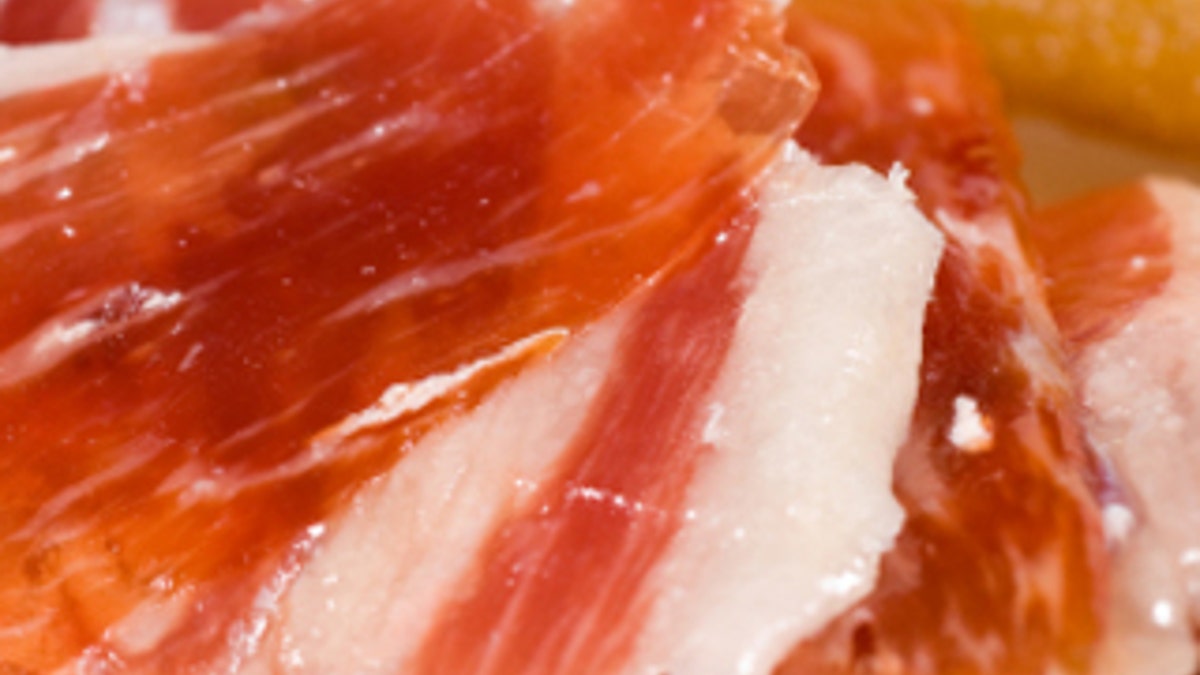
If you were to sit down and write a list of the greatest foods on earth, jamon iberico de bellota, a world-renowned Spanish cured ham, would have to be near the top.
The traditional methods of production of this most spectacular of hams, along with the rigorous standards of the Denomination of Origin imposed on those who choose to farm the Iberico pigs are so strict that the resulting ham deserves its place alongside caviar, truffles and champagne in the upper echelons of cuisine.
Jamon iberico de bellota is prized for its unique taste, created in part by the aroma of sweet acorns that the pigs feed on ("bellota" means "acorn"). Iberico pigs must graze under Encina oak trees, because their acorns give the pigs’ fat a rich, creamy texture that melts in your mouth. The salt curing of the meat and the three years of aging that follows makes for a taste that lingers like a fine wine.
Read: World's Most Expensive Ham Goes on Sale in London
On a recent visit to Spain, we were fortunate enough to be invited to stay at a farm in the province of Extremadura, close to the Portugal border. It is here where the iberico pigs, also known as pata negra because of their black hooves, prosper in the microclimate of the Dehesa. They are allowed to wander freely, eating acorns, wild grasses and herbs until they reach the required weight, with a population density of no more than two pigs per hectare of land.
After slaughter, or “sacrifice” as they call it in the region, their front legs (the paleta) and the back legs (the jamon) are covered in Andalusian sea salt for a day per kilogram to remove moisture and then allowed to hang in a controlled climate until they are ready to be sold. This process can take up to three years, meaning a timescale of five years from breeding to finished article.
The end result is worth the considerable time it takes to prepare jamon iberico de bellota. Here are five things you didn’t know about the world’s most succulent cured meat.
1. Spain is the largest producer and consumer of ham in the world
Spain produces a staggering 40 million hams a year and few meals pass by without at least a few slivers of jamon finding its way onto the table. However, jamon made from pure iberico pigs comprises only around 5% of that amount. The rest comes from other regions of Spain, such as Teruel and Trevelez, and are primarily produced from the white pig.
2. There are four designated regions for the production of jamon Iberico in Spain
These regions are Guijuelo, Huelva, Valle de los Pedroches, and Extremadura, all in the southwest of the country in the region covered by the Dehesa microclimate. The rearing, slaughter and curing of the jamon is arguably the most stringently regulated of any food on earth.
3. This ham is healthy
It is hard to believe that eating a pork product could be the healthy option, but research shows that the acorns eaten by the iberico pigs are rich sources of oleic acid. It is the same chemical found in olives, and the pigs are often referred to locally as “olives with legs.” The oleic acid is stored in the fat of the ham and is a monounsaturated fatty acid that has been shown to lower LDL cholesterol and raise HDL cholesterol.
More From AskMen.com:
America's Up-and-Coming Food Capitals
Top 10: Undiscovered Culinary Capitals
Your Guide To Dining Etiquette
4. Jamon iberico de bellota has its roots in the Islamic occupation of Spain
Although there are records of the curing of pork back to the time of the Romans and beyond, the importance of pork products, and particularly ham, to what is now Spain has its roots in the Moorish occupation of the region that lasted until the 15th century. Eating pork was seen as a symbol of religious and political independence and took on a special place in the hearts of the Spanish people.
5. Importing jamon iberico into the United States was illegal until 2005
None of the Spanish slaughterhouses met with FDA approval, so the only real-deal jamon that made it across the border had to be smuggled. Since that time only one producer has been able to meet the import requirements, Embuditos Fermin from the Salamanca region. Even though Spanish producers are working to create new standalone facilities to make the product suitable to the U.S. market, they are still being faced with evermore stringent laws. Earlier in 2009, a further restriction was placed on the import of jamon iberico stipulating that the black hooves, for which the hams are famous, be removed.
